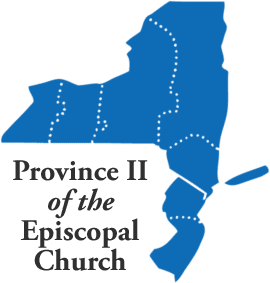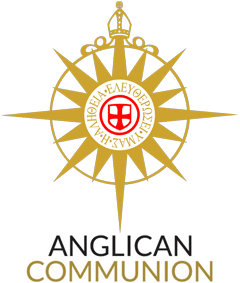Communications
Announcements

Death in our diocesan family: Richard W. “Dick” Bauer
With sadness we share the news of the death of Richard W. “Dick” Bauer, 93, on June 26, 2025. He was the father of Jewels Quelly, member of Diocesan Council, Lay Deputy to the 2024 General Convention, and Founding Steward of the BOOST Task Force for Neurodivergence.Help us BOOST inclusion in our faith community
The BOOST Task Force is conducting a survey to explore how we can better welcome and support individuals and families who experience neurodiversity – both at home and within our church communities.Sabbatical Rest
The Bishop and Canons will each be away on sabbatical in the coming year. Read more for details.Death in our diocesan family: The Rev. Kevin P. J. Coffey
With sadness we share the news of the death of the Rev. Kevin P. J. Coffey, SCP, a/CSJB, at age 70 on May 22, 2025 at Newark Beth Israel Hospital.Clergy ministry transitions in 2025
Arrivals, departures and retirements.Registration now open for second year of the School for Ministry
Bishop Hughes established the School for Ministry for the Diocese of Newark, to better support and help form members of the diocese for their particular ministries. Initially, it has been focused on training lay ministers for licensed lay ministries, such as Worship Leader, Preacher, and Pastoral Leader.New diocesan resource: Subscription to Invite Welcome Connect On Demand
In response to the great feedback from attendees about the two presentations by Mary Foster Parmer on the Invite Welcome Connect approach, we are thrilled to announce that the diocese will be making available to all congregations a diocesan subscription to the Invite Welcome Connect On Demand online training materials and resources.Death in our diocesan family: The Very Rev. Sandye Wilson
With sadness we share the news of the death of the Very Rev. Sandye Wilson, 71, on April 15, 2025.Death in our diocesan family: Diane Mayo
With sadness we share the news of the death of Diane Mayo, 89, on March 25, 2025. She was the widow of the late Rev. Robert Mayo, who had served as Rector of Christ Church, East Orange, and interim rector at St. Luke’s, Montclair and St. Paul’s, Paterson.Recommendations from the Women’s Rights Action Group
It is hoped that these actions will engage the people of God in the work of God on behalf of women and girls.Immigration Task Force launches podcast
The diocesan Immigration Task Force is excited to introduce a new podcast designed to share the stories of asylum-seekers who have made their way to The Lighthouse.Death in our diocesan family: Rosemary Lafferty Wilcox
With sadness we share the news of the death of Rosemary Lafferty Wilcox, 86, on February 8, 2025. She was the mother of the Rev. Diana Wilcox.Death in or diocesan family: The Rev. David C. Casto
With sadness we share the news of the death of the Rev. David C. Casto, 93, on Feb. 2, 2025.Death in our diocesan family: The Rev. William Chandler Riker, Jr.
With sadness we share the news of the death of the Rev. William Chandler “Bill” Riker, Jr., 84, peacefully on February 2, 2025.Death in our diocesan family: The Rev. Deacon Robert “Bob” Turner
With sadness we share the news of the death of the Rev. Deacon Robert “Bob” Turner, 86, on November 16, 2024.Death in our diocesan family: The Rev. Dr. Howard W. “Doc” Whitaker
With sadness we share the news of the death of the Rev. Dr. Howard W. “Doc” Whitaker, 71, on January 26, 2025 of leukemia.Director of Communications




